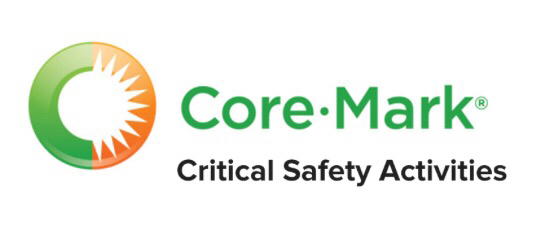Information
-
Audit Title
-
Document No.
-
Client / Site
-
Conducted on
-
Prepared by
-
Location
-
Personnel
SECTION 1: SYSTEM AUDIT
Certifications
-
1.<br>Obtain and review a copy of the current FAA Air Agency or Transport Canada AMO certificate, Operations Specifications (if applicable), and EASA/Canadian approval documents (if applicable). Are they accurate? [2A]
-
2.<br>If the repair station has "Limited Ratings", does the vendor have a capabilities listing that satisfies the standard? [2B]
-
3.<br>Has the vendor designated an employee as the "Accountable Manager"? [5A]<br><br>Note: Managers for FAA and EASA could be different.
-
4.<br>Does the vendor employ a minimum of three (3) persons? [5B]
-
5.<br>Does the roster (Do the rosters) identify all management, supervisory and inspection personnel? [5C]
-
6.<br>Does the roster (Do the rosters) identify all personnel authorized for return-to-service? [5C]
-
7.<br>Does the repair station have an employee summary for all personnel listed on the repair station roster(s)? [5D]
-
8.<br>Do the vendor's supervisory personnel satisfy the requirements of this standard? [5E]
-
9.<br>Do the vendor's inspection personnel satisfy the requirements of this standard? [5F]
-
10.<br>8.<br>Do the vendor's return-to-service personnel satisfy the requirements of this standard? [5G]
-
11.<br>Does the vendor have an FAA approved and active anti-drug and alcohol misuse program (A449 and/or Registration)? [2C, D]
Quality Program
-
12.<br>Does the vendor have an FAA/NAA accepted Repair Station (or equivalent) Manual and does it meet the requirements of the 1-A standard? [3E]
-
13.<br>Does the vendor have an FAA/NAA accepted Quality Control (or equivalent) Manual and does it meet the requirements of the 1-A standard? [3C]
-
14.<br>Does the Quality Control Manual include references, where applicable, to manufacture's standards? [3C]
-
15.<br>Does the Quality Control Manual include samples of and instructions for completing maintenance and inspection forms, or reference a separate forms manual? [3C]
-
16.<br>Does the vendor maintain a list of sub-contracted maintenance functions and agencies which includes type of certificate and rating(s), if any, held by each agency? [3I]
-
17.<br>Does the vendor ensure that sub-contractor quality meets customer specifications and legal requirements? [3J]
-
18.<br>Does the vendor have a contract allowing the FAA to inspect non-certificated sub-contractors? [3J]
-
19.<br>Does the vendor have a procedure to obtain and subsequently retain, for a minimum of (3) three years from date of work, proof that their U.S. based sub-contracted maintenance/preventive maintenance providers, at all tiers, (certificated and non-certificated), have an FAA approved and active anti-drug and alcohol misuse program (A449 and/or Registration)? [2D]
-
20.<br>Does the vendor have a procedure for reporting defects or unairworthy conditions to the customer and FAA/NAA? [3K]<br><br>Note: EASA reporting time could be different and also requires notification to be sent to the aircraft manufacturer.
-
21.<br>Is there a proper separation or maintenance and inspection responsibilities for vendors that perform required inspections (RII)? [4A]
-
22.<br>Does the vendor have an acceptable receiving inspection system which includes verification of identifying data? [4B]
-
23.<br>Does the vendor have an acceptable system for controlling stamps for both inspection and production personnel? [4C]<br>
-
24.<br>Does the vendor have a work turnover procedure? [13E]
-
25.<br>Does the vendor have a duty time limitation requirement? [13A]
-
26.<br>Are smoking, eating, and drinking forbidden in the work area or does the vendor have a written program to ensure that units are protected from contamination? [13G]
-
27.<br>Is the security system reviewed periodically by management or an outside vendor? [11B]
-
28.<br>Does the vendor identify specific individuals, by title, as responsible for the following programs:<br><br>A. Technical Data? [5H]<br>B. Shelf Life? [5I]<br>C. Calibrated tooling? [5J]<br>D. Scrap Parts? [5K]
-
29.<br>Is there a back-up person identified by title for all the above programs? [5L]
-
30.<br>Does the vendor maintain, for a minimum of 36 months, a file of audit findings and corrective actions from audits for which a VEL was signed? Is the file accessible to the auditor? []3H
Training Manual
-
31.<br>Does the vendor have a documented training program? [9A, D(1), 5D - F]
-
32.<br>Is formal and OJT training documented? [9B]
-
33.<br>Are training records for mechanics, inspectors and supervisors retained for a minimum of two (2) years after the person leaves the company? [9C]
Technical Data Program
-
34.<br>Does the vendor have procedures to: [13F]<br><br>A. Obtain customer specifications?<br>B. Incorporate customer specifications into their work processes?<br>C. Verify that customer specifications were incorporated?<br>D. Obtain approval for deviating, if necessary, from customer specifications?<br>E. Have adequate checks, inspections, and tests to ensure work was performed to customer specifications?
-
35.<br>Does the vendor have a documented system to ensure technical data is current? [6B]
-
36.<br>Does the vendor have records of manual revisions? [6B]
-
37.<br>Does the vendor have a system to control working copies of manuals to ensure they are revised with the masters? [6C]
-
38.<br>Are there established approved procedures controlling revisions in manuals deviating from OEM specifications (e.g. EO, EA, Air Carrier Data, etc.)? [6A]
-
39.<br>If the vendor has ODA authority, does it have a system for receiving customer approval prior to use of the data? [6F]
-
40.<br>Does the vendor have an approved ODA manual and roster? [6F]
Shelf Life Program
-
41.<br>Does the vendor have a documented shelf life program? [7A]
-
42.<br>Does the program list parts and materials that have shelf life limits? [7A]
-
43.<br>Is there an adequate system to assure that no item will be issued or used past it's expiration date? [7C, D]
Calibration Program
-
44.<br>Does the vendor have a documented calibration program? [8B]
-
45.<br>Does the program identify the calibration frequencies, limitations, and applicable tolerances or specifications? [8B]
-
46.<br>Does the calibration program require test and inspection equipment/tools to be traceable to the FAA/NAA (e.g., The National Institute of Standards and Technology (NIST))? [8C]
-
47.<br>Does the calibration program require records to be kept for a minimum of two (2) years or two (2) calibration cycles? [8H]
-
48.<br>Is there a system to identify each tool in the program, it's calibration frequency, and it's calibration due date? [8D]
-
49.<br>Does the vendor have a procedure for identifying, controlling and/or preventing out-of-service and due-for-calibration tools and equipment from being used? [8E]
-
50.<br>Does the vendor have a procedure to control the calibration of personnel tools? [8F]
Internal Audit Program
-
51.<br>Does the vendor have an internal audit and surveillance function? [3F]
-
52.<br>Does the internal audit function ensure compliance with customer specifications? [3F, 12I]
-
53.<br>Does the internal audit program assure appropriate corrective action? [3G]
Scrap Program
-
54.<br>Does the vendor have a documented procedure for controlling scrapped parts? [3D]
-
55.<br>Does the scrap program assure that scrapped parts are either returned to customer or mutilated beyond repair? [15A]
-
56.<br>Does the scrap program require a record of scrapped life-limited parts to be maintained for a minimum of two (2) years? [15B]
-
57.<br>Does the record include P/N, S/N and date of the scrapped part? [15B]
SECTION 2: WORK PROCESS AUDIT
Receiving/Shipping Inspection
-
1.<br>Does the vendor comply with its receiving process? [4B]
-
2.<br>Does the vendor verify that the identifying data (P/N, S/N, nomenclature, mod. No.) on the documentation and the data plate match? [14B]
-
3.<br>Does the vendor incorporate customer specifications into their work processes? [13F]
-
4.<br>Does the vendor only perform work for which it is authorized on its Operation Specifications? [2A, B]
-
5.<br>Are components returned in an appropriate shipping container or as specified by the customer? [14A]
Maintenance Observation/Sampling
-
6. Is maintenance properly performed and documented for: [1D, 3A-B]<br><br>A. Preliminary inspection?<br>B. Functional test?<br>C. Hidden damage inspection?<br>D. Unit disassembly per instructions?<br>E. unit cleaning per instructions?<br>F. Parts inspection/checking per instructions?<br>G. Parts repairing per instructions?<br>H. Properly taking and recording fits and clearances?<br>I. Unit reassembly per instructions?<br>J. Unit functional testing per instructions?<br>K. Final Return to Service inspection?
-
7.<br>Does the vendor have appropriate tools and test equipment (including equivalent non-OEM) to perform the work? [13B(2)]
-
8.<br>Are the tools and test equipment in serviceable condition? [8D, E]
-
9.<br>Are calibrated tools and equipment labels showing within calibration and are they legible? [13B]
-
10.<br>Is the appropriate technical data being utilized (e.g. Current CMM, AMM, SRM, etc.)? [6A, B]<br><br>A. Is technical data stored in a manner that will protect it from dirt and damage? [6D]<br><br>B. Are adequate viewing devices in good condition and available for viewing the technical data? [6E]
-
11.<br>If the technician is observed deviating from OEM technical data (e.g. Alternate tooling/procedures, Process Specs., DER repairs, per ODA, etc.), have those deviations been approved by the customer? [6F]
-
12.<br>Are proper safety precautions being taken? [11G]
-
13.<br>Is the unit/aircraft protected from FOD? [11G, 13D]
-
14.<br>Are customers parts properly identified throughout the maintenance actions and in storage? [13D]
-
15.<br>Does each shelf life item have the shelf life expiration limit displayed? [7B]
-
16.<br>We're items sampled for shelf life within limits? [7C,D]
-
17.<br>Are fluid dispensing cans and servicing units properly identified? [13H]
-
18.<br>Is the vendor following their work turnover procedure? [13E]
-
19.<br>Are all required licenses and repairman certificates available for review? [2A]
-
20.<br>Does the vendor properly execute customer's required inspections (RII)? [4A]
-
21.<br>Do final inspection personnel ensure that adequate checks, tests, and inspections are performed to customers specifications? [13F]
-
22.<br>Do personnel follow the return to service procedures? [3B, 5G]
-
23.<br>Are the vendor's work records complete, in order, and legible? [13I]
-
24.<br>Do the work packages contain: [13I]<br><br>A. The description of the work performed or reference to data acceptable to the administrator?<br>B. The date of completion of the work performed?<br>C. The name of the person performing the work?<br>D. The name of the person inspecting the work?<br>E. The signature, certificate number of the person returning the article to service?<br>F. Are all test and inspection records in work package?
-
25.<br>Does the vendor's return-to-service document meet customer and FAA/NAA requirements? [13I(5)]
-
26.<br>Does the vendor maintain certification on sub-contractor work? [3J]
-
27.<br>Were Major repairs/alterations properly documented? [13I]
-
28.<br>Were ADs properly evaluated, accomplished, and documented? [13I]
SECTION 3: SUPPORT SYSTEMS AUDIT
Calibration Control
-
1.<br>Does the vendor comply with its calibrated tool program? [8B,13B]
-
2.<br>Did the sample checks of the calibrated tooling indicate that the tooling is within calibration limits? [8A-G]
-
3.<br>Do calibration records: [8G]<br><br>A. Show date calibrated?<br>B. Show calibration due date?<br>C. Identify individual or vendor that performed calibration or check?<br>D. Contain a calibration certificate for each item calibrated by an outside agency?<br>E. Record details of adjustments and repairs?<br>F. Show the P/N, S/N and calibration due date of the standard used to perform the calibration?
-
4.<br>Where tooling/test equipment is used, does the vendor: [13C(1)]<br><br>A. Have an operating manual and maintenance for equipment?<br>B. Perform maintenance and servicing per the manual?<br>C. Maintain maintenance and servicing records for two years?<br>D. Where applicable, list the equipment in their calibration program?
-
5.<br>Where a vendor uses a non-OEM specified tooling/test equipment, is it properly substantiated as equivalent? [13C(2)]
Training
-
6.<br>Are RII inspectors properly trained and certified? [5F]
-
7.<br>Did the sampled names indicate the mechanics, inspectors and supervisors were properly trained, authorized and certificated, if required, for the work they perform? [5D-F, 9A, and 13B]
-
8.<br>Are the training records retained for a minimum of two (2) years after the employee leaves the company? [9C]
Facilities
-
9.<br>If the vendor deals in non-aircraft parts, materials and/or maintenance activities, are they adequately segregated from the aircraft functions? [10A]
-
10.<br>Does the vendor have: [10B(2)]<br><br>A. Sufficient work space and areas for proper segregation and protection of articles?<br><br>B. Segregated work areas enabling environmentally hazardous or sensitive operations such as painting, cleaning, welding, avionics work, and machining to be done properly and in a manner that does not adversely effect other maintenance?<br><br>C. Suitable racks, hoists, trays, stands, and other segregation means for the storage and protection of all articles?<br><br>D. Space sufficient to separate articles and materials stocked for installation from those undergoing maintenance, preventive maintenance, or alterations?<br><br>E. Ventilation, lighting, and control of temperature, humidity, and other climatic conditions sufficient to ensure personnel perform maintenance, preventive maintenance, or alterations to the standards required by the part?<br><br>F. Areas for receiving and for shipping customers units with adequate space, lighting, shelving, security and fire protection to accommodate customers units in a manner that will preclude damage, loss, and theft?<br><br>G. Adequate and appropriate storage area to safely store customers reusable shipping containers and to protect them from environmental damage?
-
11.<br>If the vendor has an airframe rating, is suitable permanent housing provided to enclose the largest type and model of aircraft listed on its Operation Specifications? [10C]
-
12.<br>If the vendor performs maintenance, preventive maintenance, or alterations on articles outside of its housing, does it provide suitable facilities that are acceptable to the FAA/NAA and its customers? [10D]
-
13.<br>Do facilities outside of the vendor's housing meet requirements of this standard so that the work can be done in accordance with the requirements of 14 CFR 43? [10D]
-
14.<br>Does the vendor have adequate safety procedures in place and are the operations conducted in a safe manner and environment? [11A-G]
Material Control Process
-
15.<br>Are parts and materials correctly identified and properly stored? [12A, B]
-
16.<br>Do parts in bins match part number on bins? [12A]
-
17.<br>Does the vendor have a quarantine area for rejected parts and materials awaiting disposition? [12C]
-
18.<br>Does the vendor comply with its scrapped parts procedure to ensure they are either returned to the customer or mutilated beyond repair? [15A]
-
19.<br>Are parts and material properly protected from damage bad deterioration? [12D]
-
20.<br>Are flammable, toxic or volatile materials properly identified and stored? [12E]
-
21.<br>Are sensitive parts and equipment (oxygen parts, o-rings, electrostatic sensitive devices, temperature/humidity controlled item, etc.) properly packaged, identified and stored to protect from damage and contamination? [12F]
-
22.<br>Are high pressure bottles correctly labeled, properly stored and secured? [12G]
-
23.<br>Does the vendor maintain traceability certification on all parts and raw materials? [12H, I]
-
24.<br>Does the vendor's record keeping system and retention time meet 14 CFR requirements? [13J]













